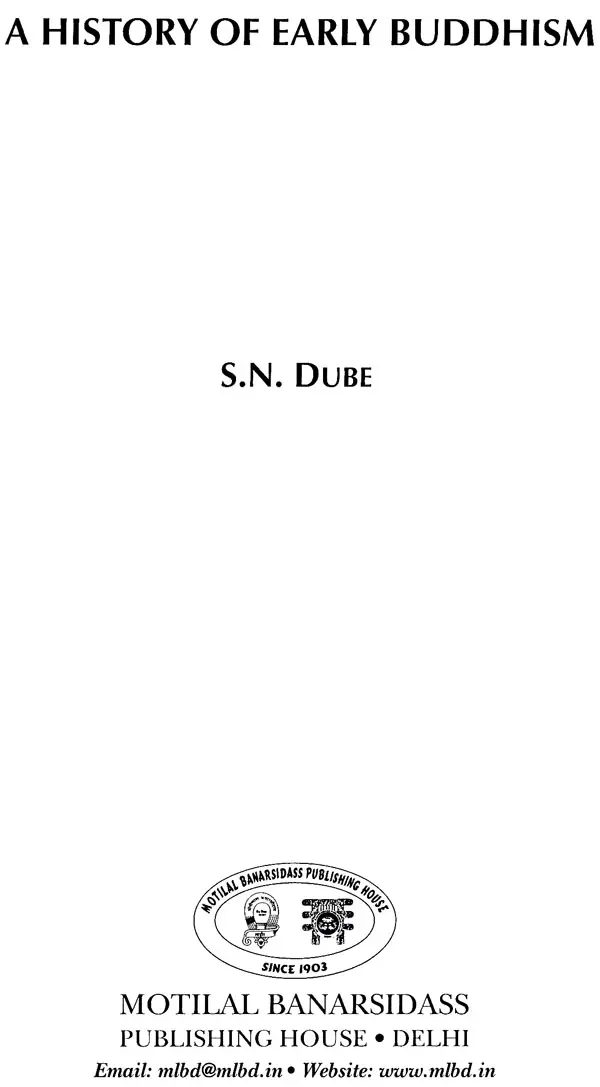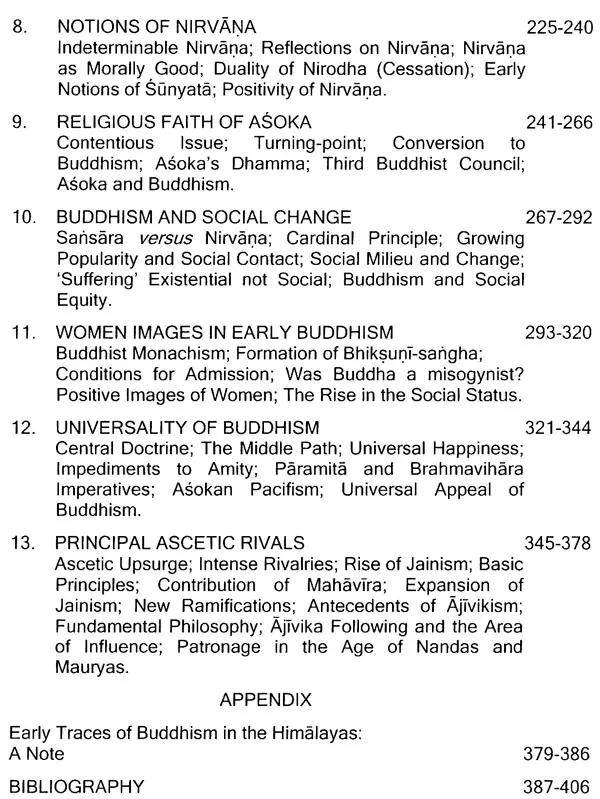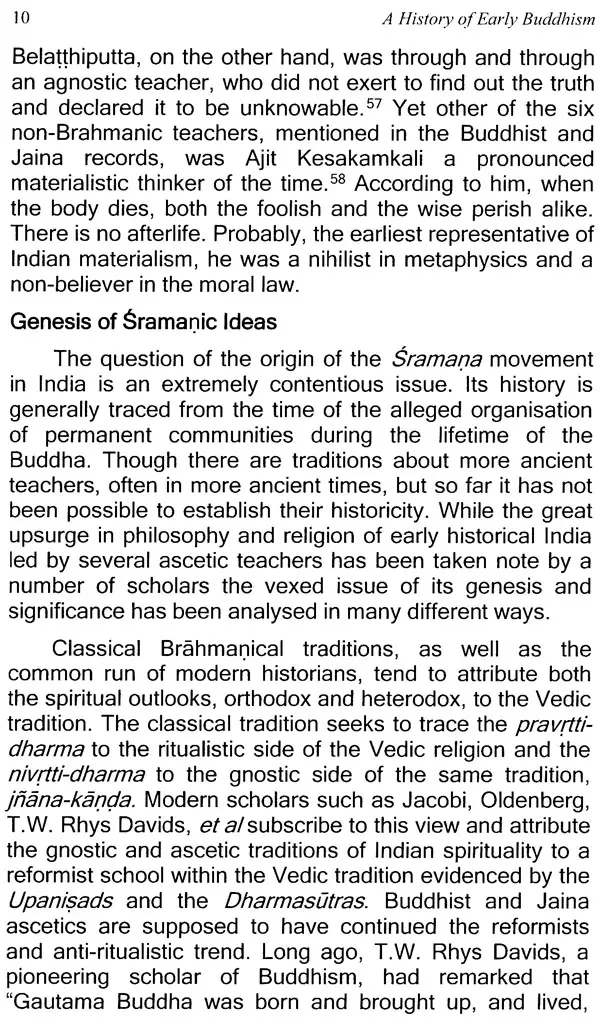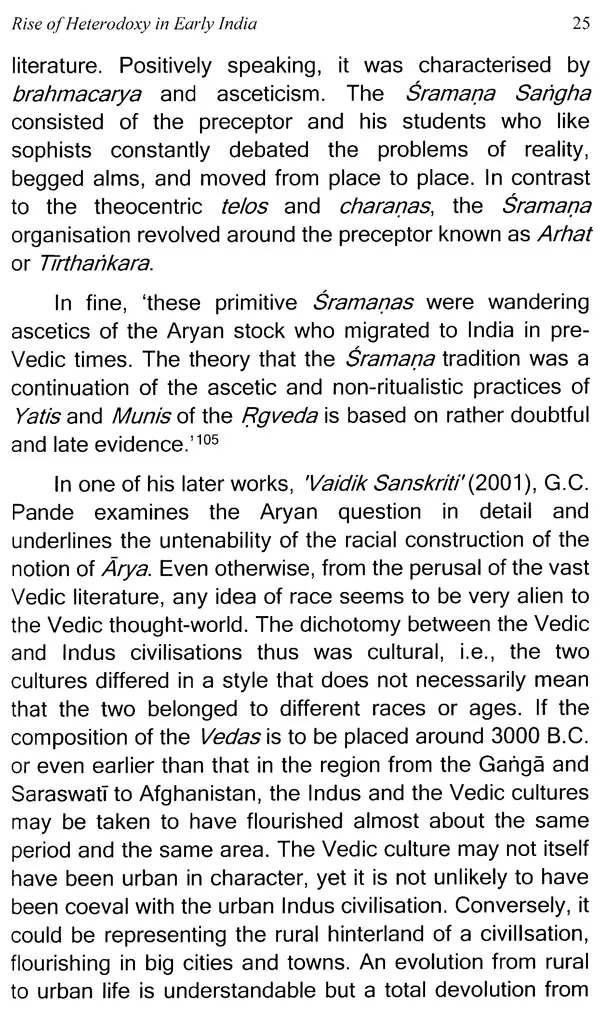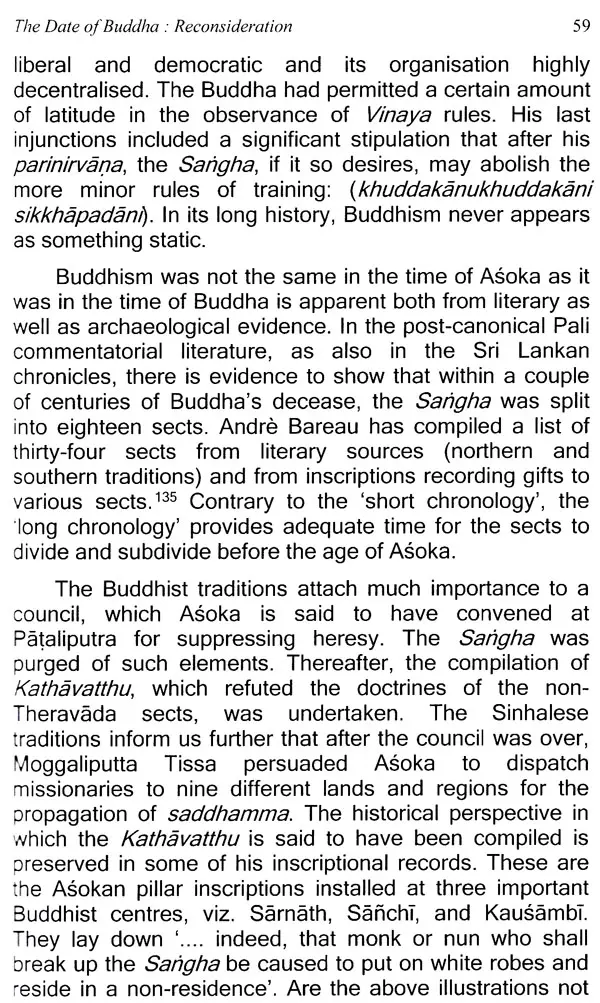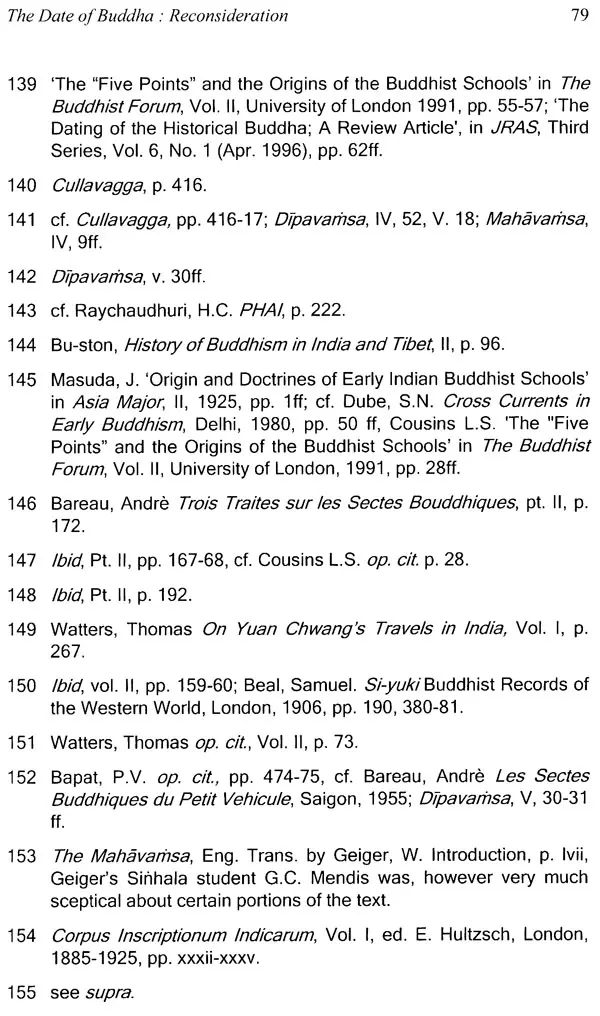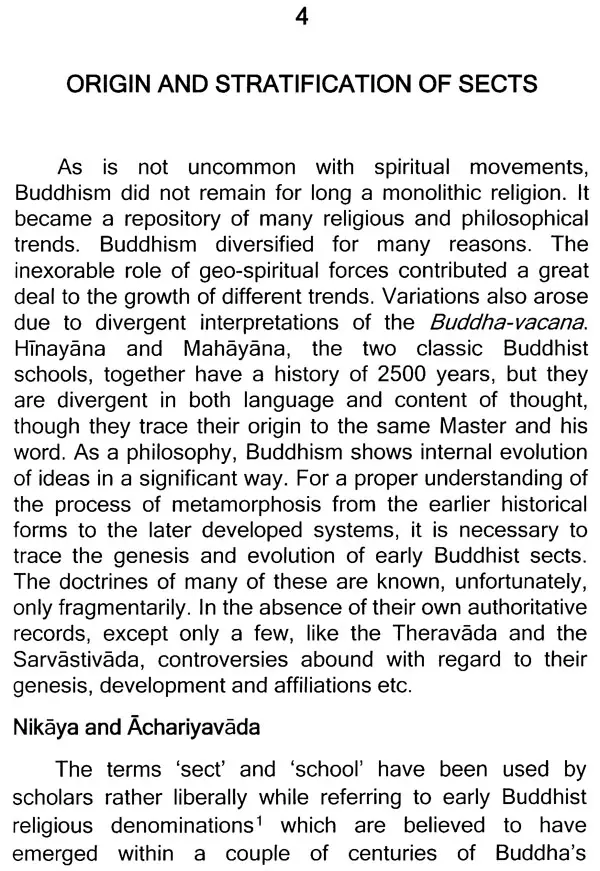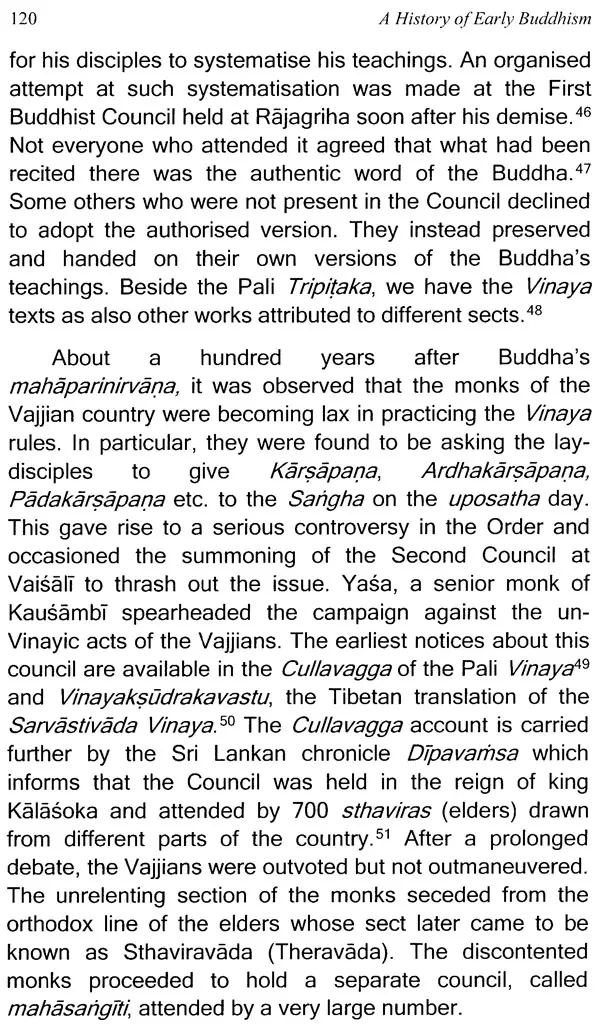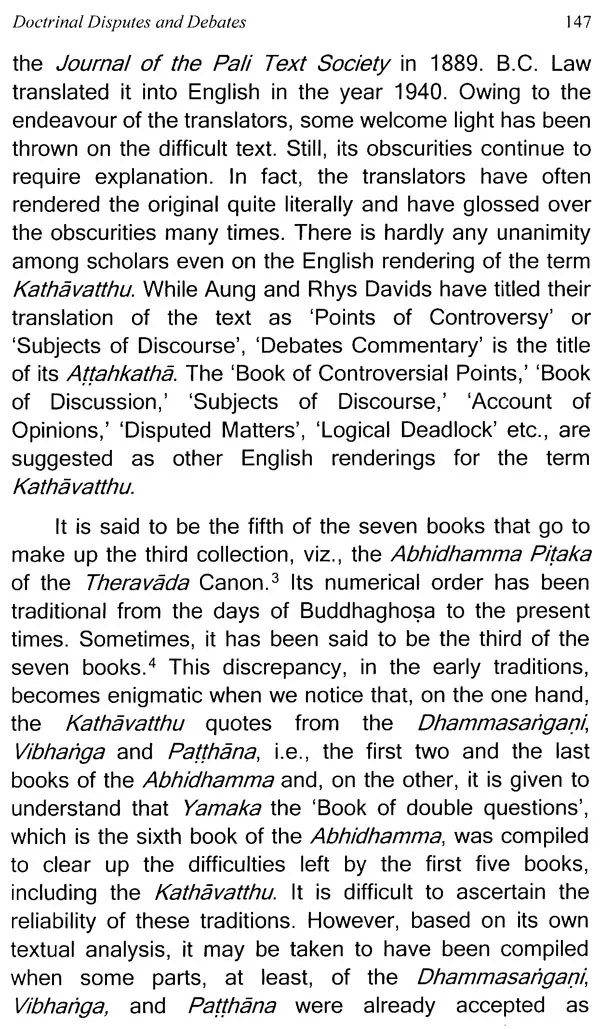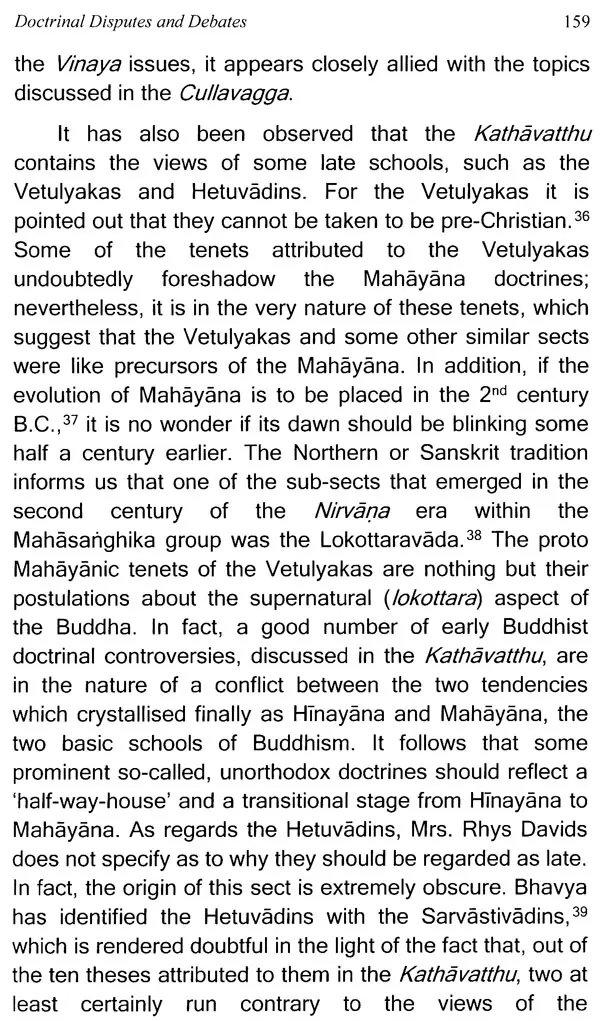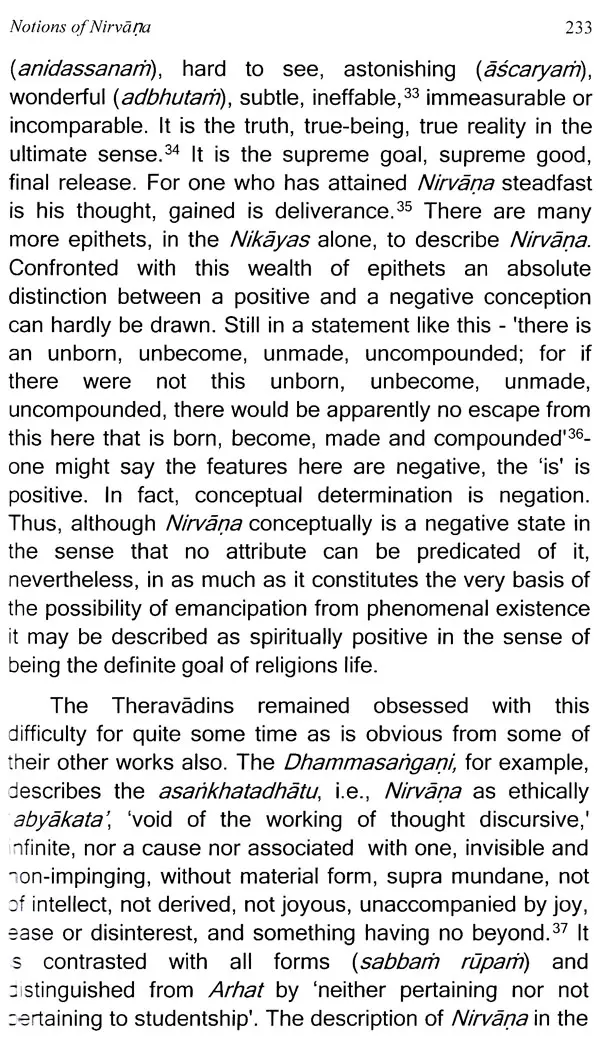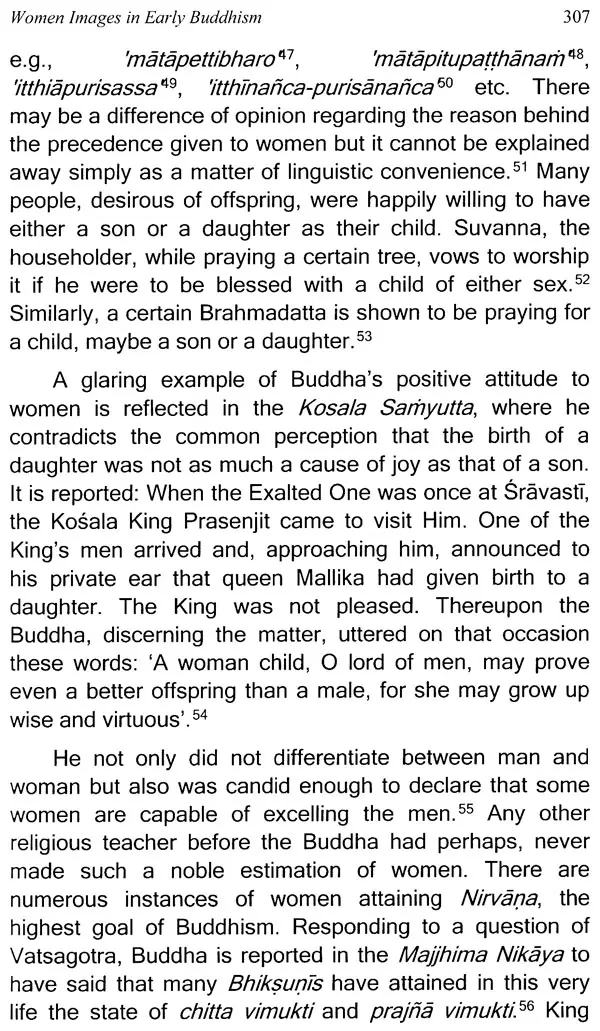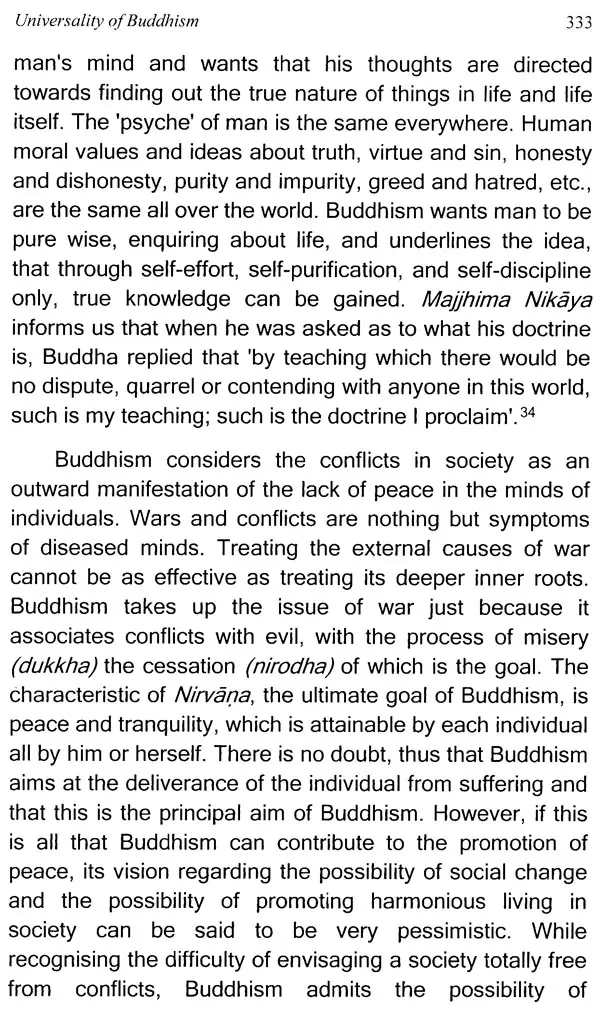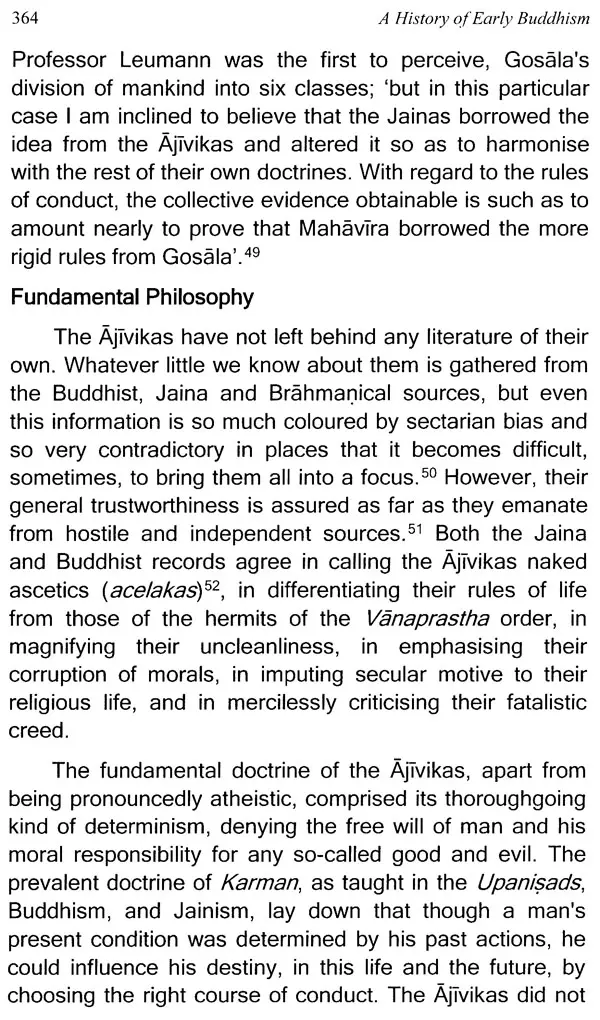
A History of Early Buddhism
Book Specification
| Item Code: | UAU090 |
| Author: | S.N Dube |
| Publisher: | MOTILAL BANARSIDASS DELHI |
| Language: | English |
| Edition: | 2022 |
| ISBN: | 9789394201316 |
| Pages: | 406 |
| Cover: | PAPERBACK |
| Other Details | 8.50 X 5.50 inch |
| Weight | 480 gm |
Book Description
Buddhism, after a spell of dormant state for almost a millennium, seems to be attracting attention and we are witnessing the beginning of a sort of revival of Buddhist studies in the recent past. The present study is in the form of collection of essays written over the years, which have been duly modified and updated in the light of subsequent study and reflection. The subjects covered in the work include : 'Rise of Heterodoxy', 'Date of Buddha', 'Evolution of the Order', 'Origin of Sects', 'Doctrinal Disputes', 'Dilution of Arhatship', 'Buddha's Divinisation', 'Reflections on Nirvana', 'Asoka and Buddhism', 'Buddhism and Social Change', 'Women Images', 'Universality of Buddhism', 'Ascetic Rivals'. The thematic essays are followed by an appendix about Early Buddhism in the Himalayas. The entire work is intended to evince not only a strong thread that binds the kindred subjects together but it also delineates a sequential evolution to justify the context.
Surendra Nath Dube (b. 1941) is a retired Tagore Professor & Head of the Department of History and Indian Culture, University of Rajasthan Jaipur. With a brilliant educational background-B.A. Allahabad University and M.A. in Ancient History, Culture & Archaeology (first position) at the University of Gorakhpur he completed his Ph.D. under the supervision of well-known scholar Professor G.C. Pande. Prof. Dube's major publications include Cross Currents in Early Buddhism (Manohar, Delhi 1980), History of Indian Civilisation and Culture (Jaipur, 1985), (ed.) Religious Movements in Rajasthan (Centre for Rajasthan Studies, U.O.R. Jaipur, 1996), Ideas and Movements in the Age of the Mauryas (IIAS, Simla, 2012). His very first book 'Cross Currents 'has been acclaimed widely. In its review in the Indian Historical Review (Vol. VIII, No..1-2) it has been underlined, 'the book is neither ambitious nor speculative. This book will help scholars and researchers of Buddhism to better understand an extremely difficult and complicated text'. Professor Dube, after his superannuation in Dec. 2001, joined IIAS, Simla as a Fellow (2002-2005) and completed a project on the 'Ideas and Movements in the Age of the Mauryas'. Apart from being a member of the ICHR, New Delhi for two terms (2008-2014), He has held other academic-cum-administrative positions, such as Director Centre for Rajasthan Studies, Director P.G. School of Humanities and Director UGC-Human Resource Development Centre, UOR, Jaipur.
From about the third century B.C. to the tenth century A.D. Buddhism stirred the whole of India from north to south and from east to west and even reached far off countries like Afghanistan, Central Asia, Nepal, Tibet, and almost the entire East Asia, from Sri Lanka to Korea, Mongolia, Japan, etc. It spread and prevailed peacefully through the force of conviction. Presently, it is the world's fourth most widely followed religion with approximately 500 million adherents. On the land of its birth, it has left an indelible mark on its cultural heritage. It is impossible to overestimate the debt that our philosophy, culture and civilisation owe to Buddhism in all her developments for many succeeding centuries. Having been in a dormant state for about a thousand years, there is a beginning of a sort of revival of Buddhist studies in India in recent years. The history of Buddhist studies on scientific lines began in Europe about 200 years ago. Henry Thomas Colebrooke probably was a pioneering scholar to discuss the Buddhist doctrines at the meeting of the Royal Asiatic Society in London in 1827. J.W. De Jong's 'A Brief History of Buddhist Studies in Europe and America' provides a useful survey of Buddhist Historiography in its evolutionary setting. One has only to glance through the volume of Bibliographie Bouddhique or look into the History of Indian Literature, Volume II by M. Winternitz to realise the deep interest in the subject and the enormity of work done by scholars. While the names of B.H. Hodgson, Eugene Burnouf, V. Fausboll, James Prinsep, Alexander Cosma de Koros, Emile Senart, Hermann Oldenberg. Louis de la Vallée Poussin, S. Levi, Th. Stcherbatsky, the celebrated couple Mr. and Mrs. Rhys Davids, et al, figure prominently among the Buddhist scholars from the West, there are also renowned veterans from the East like S.C. Das, S.C. Vidyabhushan, Dharmananda Kosambi, P.V. Bapat, Bunyiu Nanjio, J. Takakusu, and others famous for their scholarly work. Among the contemporary luminaries of Buddhism in India, the names of scholars like Bhikkhu Jagdish Kashyap, B.M. Barua, B.C. Law, Sukumar Dutt, Nalinaksha Dutt, G.C. Pande, Lokesh Chandra, Mahesh Tiwary, K.N. Upadhyaya, et al, figure prominently. They have made significant contributions to the subject, especially its early phase, which encompasses the period beginning with its foundation by the Buddha and ending with the rise of the Mahāyāna, i.e., c. 4th century B.C. to about the end of 1st century B.C. Despite comprehensive studies by numerous scholars, there still are aspects in its variegated history that need satisfactory explanation. There can be no denying the fact that the original gospel of Buddha assumed various forms in the course of its development and was soon enveloped in a mist of obscurity. It seems that unless the original Buddhist ideas and issues are analysed objectively and correlated with their historical context, it will be difficult to trace their original foundations. The present study is a modest attempt to proceed in that direction. It is a collection of 14 essays, written from time to time in the last about 50 years of my pursuit of Buddhist studies. The essays cover some significant and controversial aspects of the history of Early Buddhism. Each essay is complete in itself for the meaning and context of its own title. A part or kernel of some essays was published earlier under a different title or format, e.g., Religious Conviction of Asoka (University of Rajasthan Studies - History 1965- 66); Date of Kathavatthu (East and West, Rome, New Series, Vol. 22, Nos. 1-2, March- June 1972); The Notion of Early Buddhist Sangha (Jijñāsā, A Journal of the History of Ideas and Culture, Dept. of History and Indian Culture, UOR, Jaipur, Vol. 1, 1974) and so on. The arrangement of their material has been altered and necessary modifications made in light of subsequent study and reflection. The first essay entitled 'Rise of Heterodoxy in Early India' is about the intellectual ferment in the 6th- 5th centuries B.C. and the genesis and rise of Śramanism. In the second essay, motivated by the much trumpeted Gottingen Symposium about the Date of Buddha, we have tried to underline the untenability of the so-called short chronology which under the leadership of Heinz Bechert proposed 4th century B.C. as the date of Buddha's parinirvana. The third essay is entitled 'Evolution of the Monastic Order'. It deals with the organisation, development, and conception of sammukha and catuddisa Sangha. The fourth essay about the origin and stratification of sects analyses their genesis and evolution along with the stratification of the sub-sects of Mahasanghika and Theravada groups. The fifth essay brings into focus the issues which gave rise to doctrinal controversies and debates between the proponent sects and the disputant Theravadins. The Pali canonical text Kathavatthu presents interesting details of different disputes. The sixth essay delineates the gradual process of devaluation of the Arhatship ideal in about a century of Buddha's parinirvana. There seems to be a close interrelationship between the anti-Arhat campaign, on the one hand, and the movement seeking to establish the transcendentality of the Buddha, on the other, which is the theme of the seventh chapter. The next one is about various reflections, which characterise the notion of Nirvana. The following chapter entitled 'Religious Faith of Aśoka' addresses the puzzle arising out of seeming duplicity in the religious conviction of Asoka due to the lavish adoration of Dhamma, on the one side and his well-attested Buddhist faith, on the other. The complicated issue that has intrigued the students of history for a long time can be resolved by understanding the fact that the Dhamma of Aśoka is inseparable from Buddhism and the two must be held identical. The next essay i.e., chapter ten examines the social milieu of Buddhism as also its role as an instrument of societal change. The eleventh essay 'Women Images in Early Buddhism' traces their negative and positive portrayal in the early text. Not only the misogynist impression about women, on the part of the Buddha, seems misplaced, but he was the one who initiated a process of raising the social status of Indian womenfolk. In the twelfth chapter entitled 'Universality of Buddhism', it has been shown that despite being an ascetic philosophy the appeal of Buddhism lies in ushering an era of universal happiness. The thirteenth essay gives a brief account of some of the contemporary rivals, such as Jainism and Ajivikism. The last essay is in the form of an appendix. To facilitate smooth reading and easy understanding of the contents, the text has been provided with suitable subheadings. We are sure scholars and teachers of Buddhism, as well as students of comparative religion, will welcome the book. We also hope that it will inspire some readers to investigate the issues further. I am deeply indebted to the authors who have written before me on the subject. I have studied their works with care and profit and have drawn upon them wherever necessary with due acknowledgment. My grandchildren have been the key source of my inspiration and strength while the work was in progress during the last two years. Their smiling faces have sustained my energy and enthusiasm to complete this work. I have a special word of appreciation for my grandson Chinmay for his technical assistance all along with the preparation of the draft and for my youngest grandchild Divyanshi, who helped me in several ways. She has been especially helpful to me with her expertise in software. I am also deeply indebted to my other family members who have always been willing to extend their help ungrudgingly. It is my very pleasant duty to acknowledge the sense of gratitude to the publisher Shri Rajendra P. Jain of the Motilal Banarsidass Publishing House, New Delhi for his painstaking interest in the publication of this work. I must also thank profusely Shri O.P. Sharma proprietor of the Sharma Computers, Tilak Nagar Jaipur for preparing the typescript and the camera-ready copy so neatly and so efficiently.
**Contents and Sample Pages**
